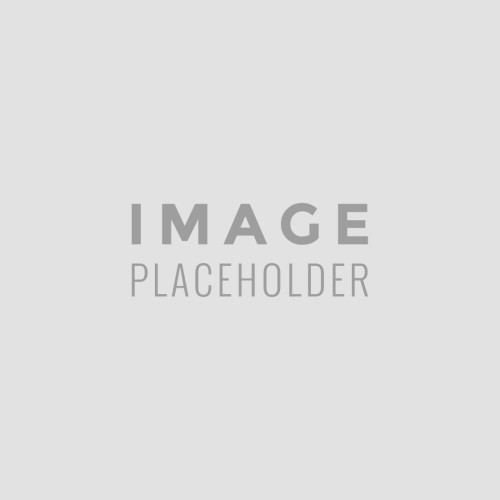In Canada, there are many different auto insurance policies available to purchase. Not all coverage is the same on each of the available auto insurance policies available. The extent of the full coverage from financial losses involved in a collision depends upon each auto insurance policy. Below is a list of the extent of coverage for all the auto insurance policies available in Canada;
Third-Party Liability (TPL), Civil Liability, Uninsured Automobile Protection, Accidental benefits Coverage, Collision Coverage, Comprehensive Coverage, Specified Perils, All Perils, Personal Injury, Property Damage, Direct Compensation Property Damage (DCPD), Inverse Liability Protection, and Hit and Run.
Third-Party Liability Insurance (TPL):
Liability insurance is the insurance type that is mandatory for all motorists in Canada. Most of the provinces in Canada require a minimum of $200,00 in liability coverage except for Quebec and Nova Scotia. Quebec requires only $50,000 minimum in liability coverage and Nova Scotia requires a minimum of $500,000 in liability coverage. Liability insurance protects people and objects involved in collisions and motor vehicle accidents caused by the driver of the vehicle. This includes coverage for; medical expenses including injuries, death, and property damage. Liability insurance also protects the driver from any financial losses due to injury from an accident, including medical bills or loss of income from the injury known as accident benefits. Accident benefits may be claimed whether the accident is caused by another driver or the driver with the liability insurance is proven to be at fault for causing the accident.
Civil Liability:
The civil liability applies to Quebec motorists and has similar coverage to third-party liability insurance. Quebec motorists are financially protected for no-fault accidents within Quebec and at-fault accidents that occur outside of Quebec that cause injury or property damage while driving. In the event of a collision, a Quebec motorist must file a claim under their civil liability insurance to cover the costs of the injuries and property damages.
Uninsured Automobile Protection:
Uninsured automobile coverage protects the insured from death or bodily injury in the event of a hit and run or accident seen as at-fault with a driver who does not have insurance. The full extent of uninsured automobile coverage is to cover the costs involved with medical bills, property damage and loss of wages. Damages to the vehicle caused by an uninsured party are also covered under this type of insurance. A person with uninsured automobile coverage does not have to be in their vehicle when a collision or hit and run occurs by an uninsured driver to have their medical expenses and loss of wages covered. In the event of an at-fault collision of an uninsured party or a hit and run the benefits from the uninsured automobile coverage will be paid to the driver and any passengers involved.
Accidental Benefits Coverage:
Accidental benefits coverage provides financial support for injuries or death caused by a collision. The financial support covered under this type of insurance generally includes; medical bills, income supplements no-fault for loss of wages, rehabilitation treatment, funeral costs, and compensation for the family if killed in the collision. There may be additional benefits covered under this type of insurance but the extent of additional coverage depends on the province. In Ontario, there is additional coverage for compensation for alternative caregivers if lost the ability to be the primary caregiver, compensation for home maintenance, damages and educational cost from skill lost due to injury, and compensation if the income replacement or caregiver benefits do not apply.
Collision Coverage:
In Canada, collision coverage is not required to drive a vehicle however it is recommended to have. Collision coverage can be an addition to insurance such as; third-party liability insurance, direct compensation-property damage coverage, uninsured automobile coverage, and statutory accident benefits coverage. Stationary objects and/or other vehicles can be involved in collisions. The purpose of collision coverage is to cover the financial costs involved in repairing or replacing your vehicle, other vehicles or objects damaged in a collision. The annual premium for collision coverage varies on; how old the vehicle is, the condition of the vehicle, and driving history.
Comprehensive Coverage:
Comprehensive coverage protects the driver from losses that occur to only the vehicle itself from events that are outside of the driver’s control and actions including debris on the road. This type of insurance covers damages that occurred not through a collision but by either the actions of others through vandalism or theft or damages by environmental causes such as wind, hail, flooding and fire. Comprehensive coverage has not only affordable premiums but also helps save the driver on costly unexpected repairs such as hail damage or windshield repairs from debris from the road, or other vehicles.
Specified Perils:
Much like comprehensive coverage, specified perils protect the owner of the vehicle from environmental damages. In the event of theft or attempted theft where damages are caused to the vehicle to financial losses for these damages are also covered under specified perils.
All Perils:
All perils protect the vehicle owner from financial losses occurring outside the driver’s control and aspects of losses as a result of the driver’s actions. All perils coverage includes comprehensive and collision coverage. If you are a first-time driver all perils are a great option for you since it covers a wide range of damages and financial losses to your vehicle.
Personal Injury:
Personal injury protection also known as no-fault insurance covers the financial medical and mental costs as a direct result of an automobile accident involving injury, trauma and death. Personal injury protection covers all medical bills, prescriptions, physical and mental health therapy, loss of wages, custodial caregiver, as well as funeral costs. If the automobile accident is caused through no- fault of your own you must claim personal injury protection insurance. Otherwise, if the driver is injured in an accident deemed as at fault the driver must claim the accidental benefits insurance instead. Only certain provinces in Canada require mandatory personal injury protection insurance.
Property Damage:
Property damage insurance is usually covered under Third-party liability insurance. Property damage insurance covers the financial losses of personal or public property incurred from a collision while driving. The property damage can be other vehicles involved, street signs or public property damage from a vehicle. The extent of property damage coverage ranges from $10,000 to $20,000 depending on the province and territory requirements. BC, MB, NB. & NL has a cap of $20,000 for property damage coverage. AB, SK, ON, PE, YT, NT, and NU have a cap of $10,000 property damage coverage. NS and QC are the only provinces that do not require a cap on property damage coverage.
Direct Compensation Property Damage ( DCPD):
Direct compensation property damage is included in third-party liability insurance coverage and is part of the no-fault system. DCPD has the damages caused by a collision on your car repaired through direct billing to your insurance even when the accident is caused by another party involved in the collision. Direct compensation property damage is mandatory in; Ontario, New Brunswick, Nova Scotia, Newfoundland and Labrador, and Prince Edward Island.
Inverse Liability Protection
There are certain places in Canada and the U.S. That has bylaws that prevent drivers from claiming damages against the parties considered to be at fault in a collision. The vehicle repairs are covered 100% in the case the other party involved in the collision is deemed to be solely responsible for causing the crash. In the case where both parties are deemed to be at fault for causing the collision in some way then the vehicle repairs are only partially covered. The amount of partial coverage for vehicle repairs depends entirely on the percentage of at fault the driver is found to be. For example, if one is deemed only 25% at fault and the other party is 75% at fault for causing the collision then the costs of vehicle repairs will be 75% covered under inverse liability protection.
Hit and Run:
Hit and run coverage for the majority of the provinces and territories in Canada is covered under accidental benefits coverage. B.C. has a hit and runs insurance policy that insures all B.C. residents regardless of owning a vehicle or not. In B.C. Hit and run coverage is up to $200,000 and protects B.C. residents from financial losses due to injuries, death, and property damage caused by a hit and run. If there are multiple parties involved in the same hit and run collision the $200,000 is divided between all parties making the hit and run claim.
What Auto Insurance Does NOT Cover
Although there are auto insurance options that include theft or attempted theft this coverage is only for the theft of the vehicle itself. Auto insurance does not protect the vehicle owner from the loss of personal items within the vehicle this includes new sound systems or added GPS systems. These items can cost the vehicle owner a hefty amount to replace. But there are options available within home insurance policies that can protect from the loss of personal items in a vehicle during the event of theft. Not all home insurances have this coverage so it is important to find out what exactly your home insurance policy covers.
Protect Your Vehicle And Your Finances With Auto Insurance Today!
In a few simple clicks, you can be quoted, purchase and manage your auto insurance entirely online. Have more than one vehicle? Save even more on insurance with our multi-vehicle auto insurance policy.


